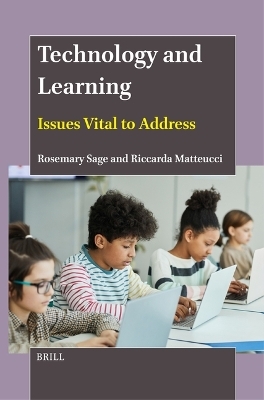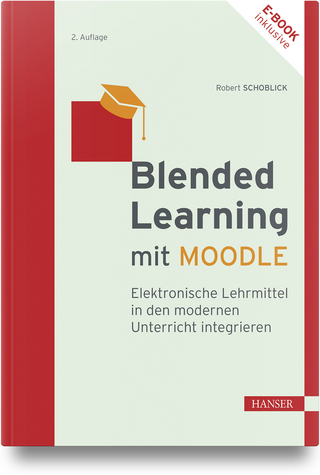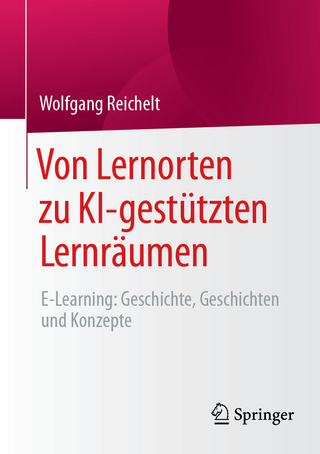
Technology and Learning
Brill (Verlag)
978-90-04-68860-5 (ISBN)
This book unpicks how the growing role of technology, particularly tools designed to solve real-world problems, impacts thinking and expression. Mind-bending AI-generated fact, fiction, art and music challenge the boundaries of machine capability and human consciousness. Quantum physics views consciousness as self-observation reliant on language and thinking. Now machines implement life routines, there is a need for better human thinkers and communicators for tackling issues, like climate change and overpopulation. World Thinking Studies show decline in language and thinking, with one-third of adults lacking them for life needs. Technology reduces direct talk – essential for thought. A 2024 Mental State of the Year study finds Britain the world’s second most miserable place, only slightly more cheerful than Uzbekistan, showing inability to think through and solve problems. The subjects discussed in this book are processes, for applying technology successfully; practices, to determine how to implement technology support for thinking, communication, and collaboration; performance, in terms of student technology experiences; and predictions, to outline and analyse current technology trends.
Rosemary Sage, Ph.D. (1992), is a speech pathologist, psychologist and teacher across all education stages. She has worked in 38 countries on language, education, and workplace issues and published many books and articles on these subjects. Presently, she is working on the World Thinking Project, revealing how limited narrative language affects cognitive processing. Riccarda Matteucci, Dott. (1973), is a language and communication expert who has researched the history of language as a senior research fellow at the University of Cambridge. Her teaching has involved all levels in schools and universities and, mostly recently, included educational robotics to prepare the 21st century citizen for life and work.
Foreword: General Perspective: What Helps or Hinders
Juan Romero
Foreword: Perspectives on the Complexities of Digital Innovation and Transformation
Peter Chatterton
Foreword: An Educational Perspective
Elizabeth Negus (Dame)
Foreword: A Business Perspective: Facing the Future
Nigel Owen
Foreword: Teaching for the New Industrial Age: The Europole System
Stefano Cobello
Preface
Background Perspectives
Figures and Tables
Prologue
Rosemary Sage and Riccarda Matteucci
1 Technology Issues
2 Technology Warnings
3 The Wider Context
4 Content
Laying the Groundwork: The Issue of Consciousness
Riccarda Matteucci
1 Introduction
2 When Did This Start and How?
3 Being, Feeling and Knowing
4 Intelligence, Mind-Perspective and Feelings
5 Consciousness
6 Artificial Intelligence (AI) towards Conscious Machines
7 Federico Faggin’s View on Consciousness
8 Review
PART 1: The Processes of Learning
Introduction to Part 1
Rosemary Sage and Riccarda Matteucci
1 What Do We Communicate? Thinking Processes in a Technology Era
Rosemary Sage
1 Introduction: How We Think
2 An Example of Basic Thinking
3 Narrative Thinking and Language Structure
4 Evidence of Thinking Problems
5 What to Consider
6 How Narrative Language Works for Thinking
7 Language Knowledge
8 How We Assemble Information
9 Thinking about Thinking
10 Decision-Making
11 Developing Language and Thinking
12 Issues to Consider
13 The Role of Higher Education Leaders
14 Theories of Thinking and Language
15 Review
Appendix A
2 What Are Learning and Remote Learning Processes?
Rosemary Sage and Riccarda Matteucci
1 What Is Learning and Remote Learning?
2 How to Use the Five Learning Senses
3 Communication Is Key to Effective Learning
4 Peer Support for Learning
5 What Is Remote Learning?
6 Review
3 Why Technology Makes Learning Processes Difficult
Rosemary Sage
1 Introduction: Communication Issues
2 What Are the Problems Processing Quantities of Talk and Text?
3 E-learning
4 Equality: High Level Language Deficiency (HLLD)
5 Review
PART 2: The Practices of Learning
Introduction to Part 2
Rosemary Sage and Riccarda Matteucci
4 Teaching Practice for the New Industrial Age: The Europole System
Rosemary Sage and Riccarda Matteucci
1 Introduction – Education for Robotics: The Context
2 The Robotic Approach
3 Criteria for Development
4 Project Implementation
5 Lesson Structure
6 University Visits
7 The Nao Robotic International Challenge
8 Comment
9 Review
10 Main Points from the Project
5 Technological Aids and Practice during the Pandemic and After: Training for Complexity
Riccarda Matteucci
1 Introduction
2 Interconnected Reality
3 How Well Do We Know Reality?
4 Ordered and Unordered Systems
5 What Strategies Are Suitable for Ordered and Unordered Systems?
6 What Is a Complex System in Education?
7 How Can We Help New Generations to Move around inside Complex Systems?
8 Review
6 The False Practice of Web Information: What to Consider When Accessing Internet Sources
Rosemary Sage and Riccarda Matteucci
1 Introduction: The Background to Fake News
2 Evaluating Web Sources
3 The Background to False Information
4 The Danger to Universities
5 Modern Hypocrisy
6 Two Opposing Groups of People
7 Review
PART 3: Performance in Learning
Introduction to Part 3
Rosemary Sage and Riccarda Matteucci
7 Perfect Performance with Technology
Rosemary Sage and Riccarda Matteucci
1 Introduction: What Is the Communication Process?
2 What Are the Communication Competencies?
3 Review
Appendix A: Example of a Pre-lecture Information Sheet
8 Experiences of Learning Performance
Riccarda Matteucci and Rosemary Sage
1 Student Survey – Italian Student Reflections on Their Post-Pandemic Learning Experiences – Riccarda Matteucci
2 Case Studies – Experiences of Learning – Rosemary Sage
Appendix A
9 Communication Performance in a Technology World
Rosemary Sage
1 Introduction
2 Issues about Speaking
3 Problems of Communicating in an Age of Increasing Technology
4 Organising Strategies for Information
5 Principles When Communicating Information
6 Pandemic Issues
7 Implications for Underdeveloped Communication
8 Review
PART 4: Predictions for the Future
Introduction to Part 4
Rosemary Sage and Riccarda Matteucci
10 Predicting Generalist Not Specialist Routes for Education and Technology
Rosemary Sage
1 A General Background
2 The Generalist-Specialist Debate in the Pandemic
3 Education Bureaucrats Show No Value for Independent Thinking
4 Generalists vs. Specialists
5 Pros and Cons of a Generalist
6 Pros and Cons of the Specialist
7 Roles of Generalists and Specialists
8 Comment
9 Developing Interconnections
10 Disadvantages of a Generalist
11 Why Is a Generalist Approach Necessary in Education?
12 The Sampling Period
13 Research Studies
14 Problems Arising from a Lack of Sampling Opportunity
15 Practice Not Talent
16 Review
11 Predicting How Humans and Machines Will Evolve?
Rosemary Sage
1 Introduction
2 Merging of Machine Capability and Human Consciousness
3 Can Humans and Machines Exist in Harmony?
4 What Is Human Intelligence?
5 Group Conflicts
6 Ways to Co-exist
7 The Issue of Ethics
8 Review
12 Predictive Protocols for Teacher and Student Support
Riccarda Matteucci
1 Suggestions for Self-care: Relevant for Teachers and Students
2 Comment
3 Ways to Support Student Healing
4 Review
Epilogue: What Is Predicted for the Future and What Do the Book Chapters Tell Us?
Rosemary Sage and Riccarda Matteucci
1 Introduction: The Age of Mind Control
2 A New Reality
3 The Influence of Firefox
4 Venture Capitalists
5 BMI Dangers
6 What Are BMI Issues for Education?
7 Dangers
8 The Main Messages of the Book
9 Review
10 Final Thought
11 A Checklist to Assist Technology and Learning Plans
The 2022 Chat Takeover!: Giving ChatGPT3 a Go To Assess Education for Us
Riccarda Matteucci and Rosemary Sage
1 Introduction
2 How Does ChatGPT Work?
3 ChatGPT Tests
4 The Editors Experience with the ChatGPT
5 Review
Appendix A: Sample 1, Riccarda Matteucci – ChatGPT3 14/12/2022
Appendix B: Sample 2, Rosemary Sage – ChatGPT3 07/01/2023
| Erscheinungsdatum | 05.06.2024 |
|---|---|
| Verlagsort | Leiden |
| Sprache | englisch |
| Maße | 155 x 235 mm |
| Gewicht | 666 g |
| Themenwelt | Schulbuch / Wörterbuch ► Unterrichtsvorbereitung ► Unterrichts-Handreichungen |
| Sozialwissenschaften ► Pädagogik | |
| ISBN-10 | 90-04-68860-9 / 9004688609 |
| ISBN-13 | 978-90-04-68860-5 / 9789004688605 |
| Zustand | Neuware |
| Haben Sie eine Frage zum Produkt? |
aus dem Bereich


